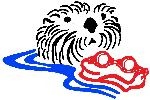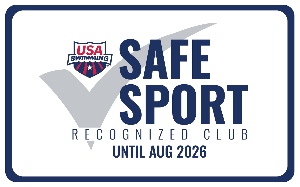SWIMMERS INFORMATION
SWIMMERS Responsibilities
The only requirement to become an "OTTER" is the ability to have fun safely. Along with that comes an obligation to follow the team philosophy and guidelines regarding good sportsmanship and "teammanship" and to become the best person you can be.
All ORO swimmers are expected to participate in a minimum number of dual/tri meets and to participate in the Championships at the end of the season.
If swimmers feel they have unusual circumstances, which they know will prevent them from fulfilling their team commitments for the season, it is the swimmers’ responsibility to notify the coach as early as possible. We are a competitive swim team and our practices, events, and meets are all planned with the hope of producing a happy, motivated team.
Swimmers need to come to practices ready to learn and work hard. They need to be prepared with suit, cap, and goggles.
Swimmers need to be respectful: no talking when a coach is talking, listening closely to what a coach is saying, doing to their best ability what a coach asks them to do.
Swimmers need to be on time for practices and meets
Individual Goals
We always emphasize personal improvement first. It is only when individuals improve that the team can improve.
- Individual swimmers look to cut time and swim a race without disqualifying.
- The team looks to the Championship meet where it needs to be the strongest it’s been all season.
As soon as a swimmer completes a race legally, a time is recorded in our database.
- This becomes the seed time for the next meet.
- Sometimes, swimmers are timed during practice and this time is used for seeding so that the meet runs more smoothly.
- Best estimates are also used - times will end in xx:69.
Swimmers in every age group can swim more races than are offered at most Otter home meets.
- Due to time, the league has decided on specific races that will be used at the Championship meet. These races are also used at the dual home meets.
When an Otter swimmer shows proficiency in a shorter distance race and wants to swim the longer distance race, the coach will put the swimmer in the race when it is available.
- The swimmer most likely will be seeded with older swimmers.
Unless, told differently, the swimmer will not be scored in her/his age group, but with the age group for which the race at the meet is intended.
NUTRITION
YOU ARE WHAT YOU EAT!
For all athletes, a balanced daily diet gives your body the proper raw materials necessary for training. Keeping your body at optimum mental and physical fitness is an everyday job. A balance of protein, carbohydrates, and fats is always correct. Avoid foods before a meet that typically cause any degree of indigestion.
Think of the following:
- To swim like greased lightning, don't eat grease!
- Take junk food and junk it!
- Instant swimmer - Just add water - Stay hydrated, drink lots of clear, non-carbonated fluids, at least 5 - 8 ounce glasses of water/liquid per day.
- Seasoned swimmers don't need seasoning.
- Right before a competition is NOT a good time to eat spicy foods.
- Sugars can increase your body's insulin and slow you down - stay away from sweets.
- Fizzy water makes you fuzzy!
- Try to stay away from carbonated drinks.
PRE-COMPETITION SUGGESTIONS:
BREAKFAST: fruit juices (preferably clear)
- Waffles, pancakes or French toast with fruit or minimal syrup
- Cereal with minimal milk
- No sugar
LUNCH:
- Clear soups
- Baked potatoes with minimal margarine or other toppings
- Fresh fruits
- Clear fruit juices
- Baked or grilled poultry
- Jell-O made from scratch to minimize the sugars
DINNER:
- Clear soups
- Low fat meats
- Pasta
- Greaseless pizza
- Rice
- Baked potato without margarine or topping
- Vegetables
- Sherbets
- Plain cakes - no icing
POST COMPETITION:
- Post competition meals should be a balance of proteins and carbohydrates in order to replace those used during the competition swims.
- The fun of this meal is that you can again put toppings on your potato or syrup on your pancakes! But, never in excess.
AWARDS
A recognition program follows after each season. All family members are invited to attend and all swimmers present are recognized. Medals and ribbons from Champs are distributed at this time as well as team awards that can change from season to season.
- Dual & Tri Meets: Ribbons are awarded to the top 6 finishers in each event. With multiple heats within an event, it is often hard to know who will receive which place until the results have been tabulated.
- Heat winner awards: Given out at CHAMPS to the swimmer who finishes first in each heat. (The swimmer receives this award as soon as they exit the water.)
- Participation ribbons: Given to any swimmer who participates in Champs.
- Championship medals and ribbons: The number of places that receive medals or ribbons changes with the year and season.
- 10 and under completes 100 free, 50 back, 50 breast, 50 fly, 100 IM (SCY) or 200 IM (LCM).
- 11-12 complete 200 free, 50 back, 50 breast, 50 fly, 100 IM (SCY) or 200 IM (LCM).
- 13 and over completes 100 back, 100 breast, 100 fly, 200 IM
- 10 and under completes 200 free, 100 back, 100 breast, 100 fly, 200 IM (SCY).
- 11-12 competes 400 free (LCM) or 500 free (SCY), 100 back, 100 breast, 100 fly, 200 IM.
- 13 and over completes 400 free (LCM) or 500 free (SCY), 200 back, 200 breast, 200 fly, 200 IM, 400 IM
Under 1 Minute Club: Competed the 100 yard Free in under a minute.
Under 1 Minute Club –Non free : Completed a 100 yard non freestyle event in under 1 minute.
Under 2 Minute Club: Competed the 200 Free in under 2 minutes.
Metric Minute: Competed the 100 Meter Free in under 1 minute.
Otter Vet: This award is given to graduating Seniors.
TEAM LEADERS
Many OTTERS would like to be a Captain of the team someday. Take a look at the following and see what you think.
A captain is a swimmer with responsibility and respect, who is selected by peers to lead the team in and out of the water.
The Captains' two basic principles are:
- Lead by doing & encourage your teammates.
- Earn the respect of your teammates with mature behavior, good team spirit, and a willingness to give 110%.
In the Water
- Work hard on EVERY set. Relate practices to personal &/or team goals.
- Encourage skill improvement & help those around you to gain skills
- Be a motivator
- Encourage
- Arrive on time and help get the equipment ready for practice without being asked.
- Work on keeping practices fun while still working hard
Out of the Water
- Be a motivator. Encourage sensible training habits. Pay attention to your teammates and help when help is needed.
- Accentuate the positive & compliment a job well done in or out of the pool.
- Let a coach know if there is a problem brewing. Coaches can't help if they don't know.
- Discourage negative thinking - it's contagious.
- Come up with a new activity, a new cheer or a new drill or set.
Swimmers eligible for Captain are in the 13-18 Age Group and have been with the Otters at least one full season. Those eligible to vote are any members of the Otters who have completed one full season with the team.
Age Group Leaders are the "captains " of their age groups.
- They help the team captains with various team functions and organize some functions of their own for their age group.
- To be eligible to vote for or become an Age Group Leader, you must have completed one full season with the Otters.
How to mark a swimmer's arm for a swim meet
So you’ve signed up for your kid's first swim experience, and now your child is about to have their first meet. How do you make sure they get where they needs to go? Nobody wants to be ‘that’ parent and have their child’s arm look like this:
How is your child going to get to their race with THAT? The first step to getting your swimmer ready to compete is marking their Event, Heat, and Lane (or EHL for short).
The first thing you’ll need to do is purchase a copy of the Heat Sheet (if not free on the "Meet Mobile" APP or provided by the host team), the seeding sheet that tells you when and where your swimmer is to compete. The heat sheet is comprised of little groupings of “heats” that each may look something like this:
Events, listed numerically, are usually categorized by gender and age. Note, that they do not always start at 1. Check out “A” above to see where you would find the Event Number.
Heat information can be found listed below the event line, and tell you the groupings of entrants. These groupings are usually based on seed times. There are often multiple heats of an event and specific heats will be listed as “Heat x of x”. Pay special attention to your child’s assigned heat, located at “B”.
Lane assignments can be found listed vertically (“C”) and indicate the respective lanes in which the swimmers will compete. Lane assignments will sometimes start with a 0 and sometimes with a 1, depending on the pool.
Once you’ve identified all of your swimmers’ races, it’s time to mark their event (E), heat (H), and lane (L) in an easy to read format. Most parents chose to organize this information on their child’s arm, via a water-proof, permanent marker, making it easy for their child to frequently check when they are to be swimming. This grid will look something like the one below:
This Swim Grid shows what a completely filled out EHL should look like. In our version of the Swim Grid, we added a fourth column to add a description of the stroke, and/or position on a relay if you so choose.
With your child’s EHL filled out, they should be more than ready to be where they need to be, when they need to be there. EHL is part of the swim meet experience, and removes some of the fear and anxiety kids have when starting out in the sport. It provides a safety net, that they can fall back on when they lose track of where they are. It also provides assistance to bullpen monitors and volunteers, charged with helping the kids get to their events in an orderly and timely fashion. No one wants to be the person who has to tell a 6 year old they missed their only opportunity to swim for the entire session.
Part of the experience of swimming, comes through having fun and competing. Missing events is never fun, and marking your swimmers’ EHL, helps provide you and your athlete the assurance that your athlete will be where they need to be to gain competitive experience.






